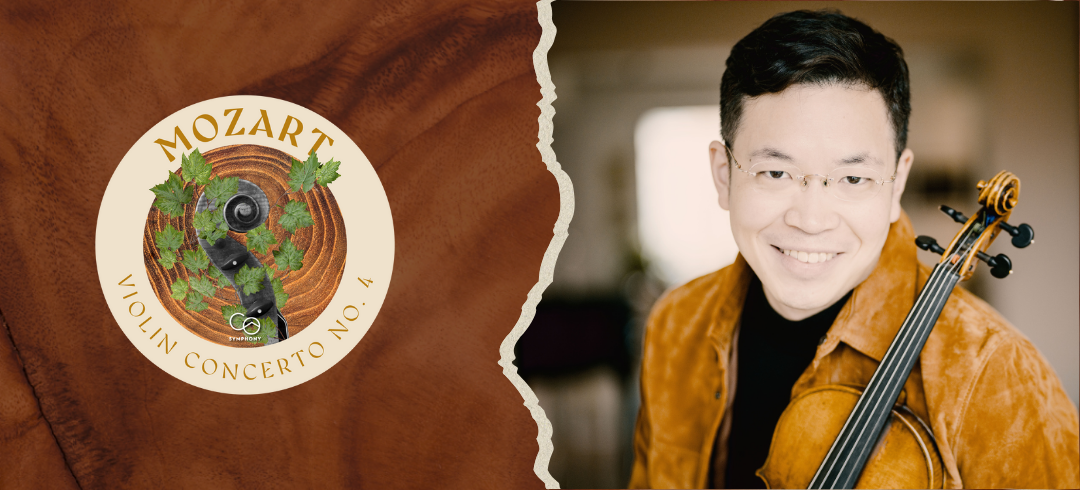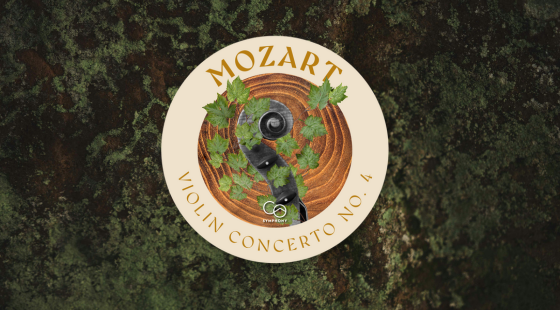The name of Wolfgang Amadeus Mozart instantly calls to mind a breathtaking array of compositions that changed the course of Western music. To his contemporaries, however, Mozart was more than a composer, he was also one of the foremost instrumental performers of his day, dazzling Europe with his masterful keyboard artistry. Yet what often goes overlooked is his remarkable ability on the violin, an instrument he learned at the knee of his father, Leopold Mozart, one of the 18th century’s most renowned violin pedagogues.
By the age of seven, the young prodigy was already performing publicly as a violinist. On his first trip to Italy in 1770, Giovanni Sammartini and Pietro Nardini — two of the era’s most celebrated violinist-composers — were so impressed with Mozart’s playing that they wrote exercises specifically for him. That same year, back in Salzburg, he was named concertmaster of the Court Orchestra, a position that demanded not only virtuosic playing but also composing, co-conducting from the keyboard, and leading from the violin.
Leopold Mozart once reminded his son, “You have no idea how well you play the violin. If you would only do yourself justice, and play with boldness, spirit and fire, you would be the first violinist in Europe.” Wolfgang, however, was more enamored with the piano, famously retorting, “When performing is necessary, I decidedly prefer the piano and I probably always shall.” After leaving Salzburg for Vienna in 1781, Mozart laid the violin aside permanently, preferring the viola in private quartet sessions.
Still, during his years as concertmaster, he left behind five violin concertos — all written in the single year of 1775 — works that remain central to the repertoire today. It is with the last three, including the Concerto No. 4 in D major, K. 218, that Mozart first reached true maturity as a composer. These concertos marry youthful energy with the poise and sophistication that would soon define his great operas, symphonies, and chamber works.
“You have no idea how well you play the violin. If you would only do yourself justice, and play with boldness, spirit and fire, you would be the first violinist in Europe.”
Leopold Mozart
Mozart’s Fourth Concerto is full of surprises. The first movement starts with a playful, almost military-sounding fanfare from the orchestra, but Mozart quickly softens it with a graceful reply from the oboes and violins. When the soloist enters, the violin seems to laugh at the pomp of the opening, spinning out delicate ornaments, dazzling scales, and bright arpeggios. Instead of a heavy, serious middle section, Mozart treats us to something more like a free-flowing fantasy, full of sparkle and invention.
The second movement shifts into an entirely different mood, more gentle, tender, and full of lyrical beauty. It feels almost like a love song lifted from one of Mozart’s operas, with the violin singing long, expressive lines that seem to float above the orchestra. It’s a moment of intimacy and calm, offering listeners a chance to lean back and simply bask in the warmth of Mozart’s melody.
The finale is lively and full of charm, built in the spirit of a dance. Mozart combines flavors from across Europe: the open, sunny melodies of Italy, the polished elegance of France, and the sturdy craftsmanship of his German roots. The result is music that feels both playful and sophisticated, brimming with wit, joy, and a sense of celebration that makes the concerto’s ending as irresistible as its beginning.
When Paul Huang takes the stage with the Colorado Symphony November 7–9, audiences will hear not only Mozart’s youthful brilliance but also the artistry of one of today’s foremost violinists. Known for his “unfailing golden tone” (The Strad) and interpretive depth, Huang is uniquely poised to bring out both the fire and the grace that Leopold once urged his son to display.
See Paul Huang Perform Mozart Live
Together with the orchestra, Paul Huang will illuminate the genius of a 19-year-old composer who, in turning from performer to creator, left behind works that continue to enchant and inspire across centuries.


